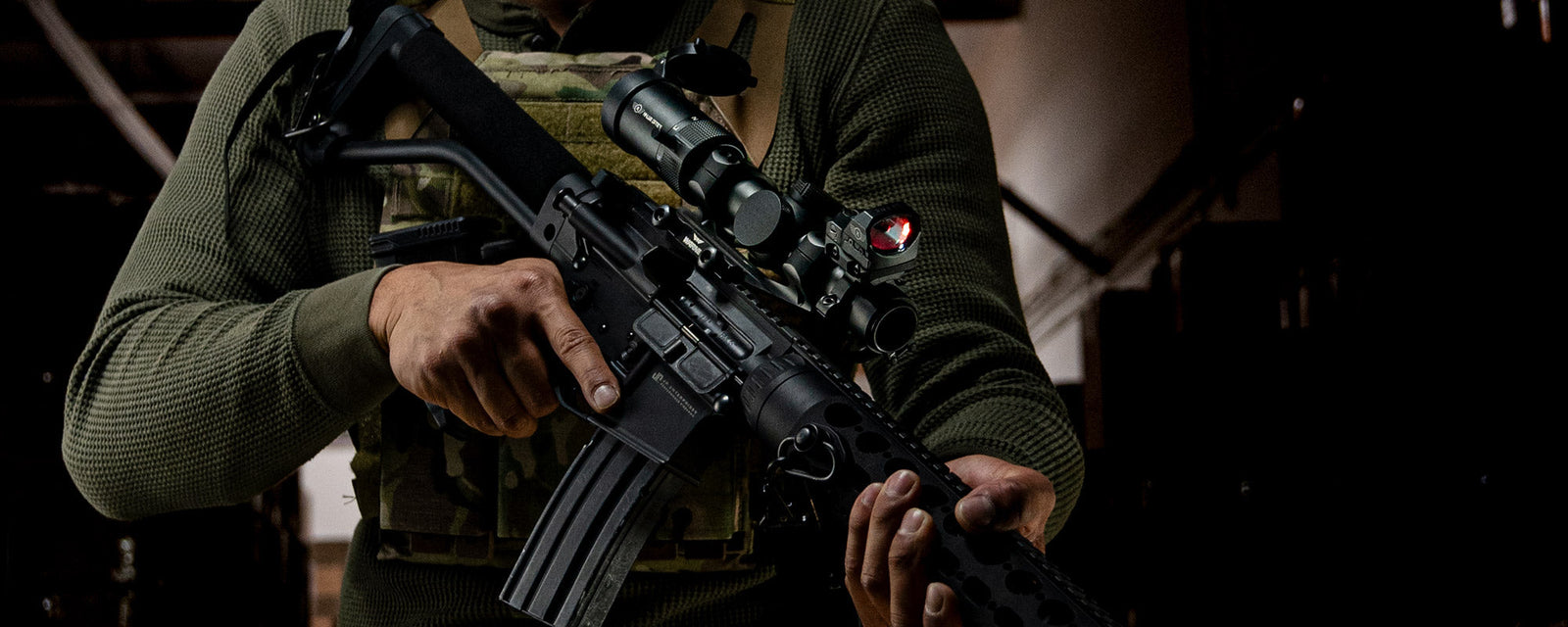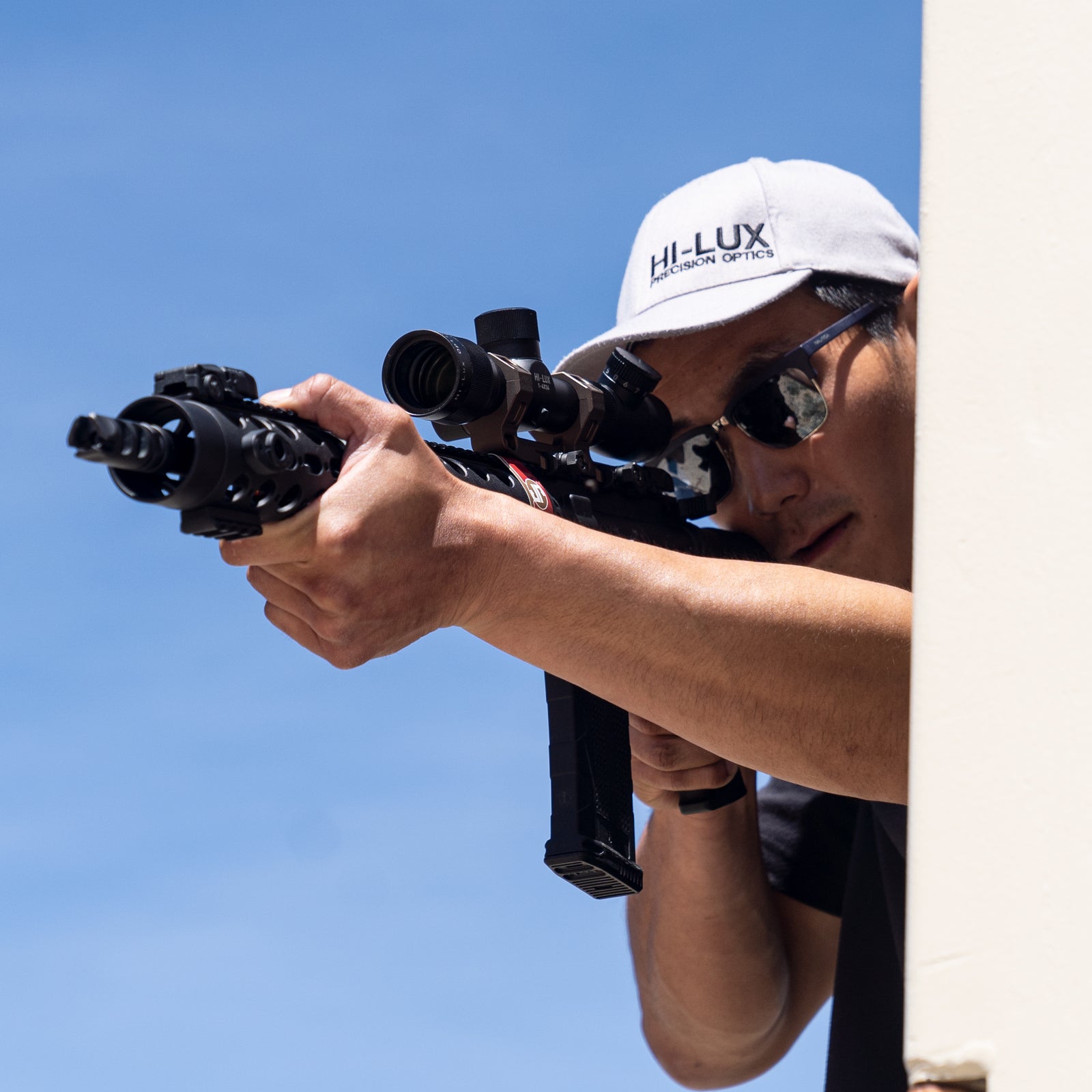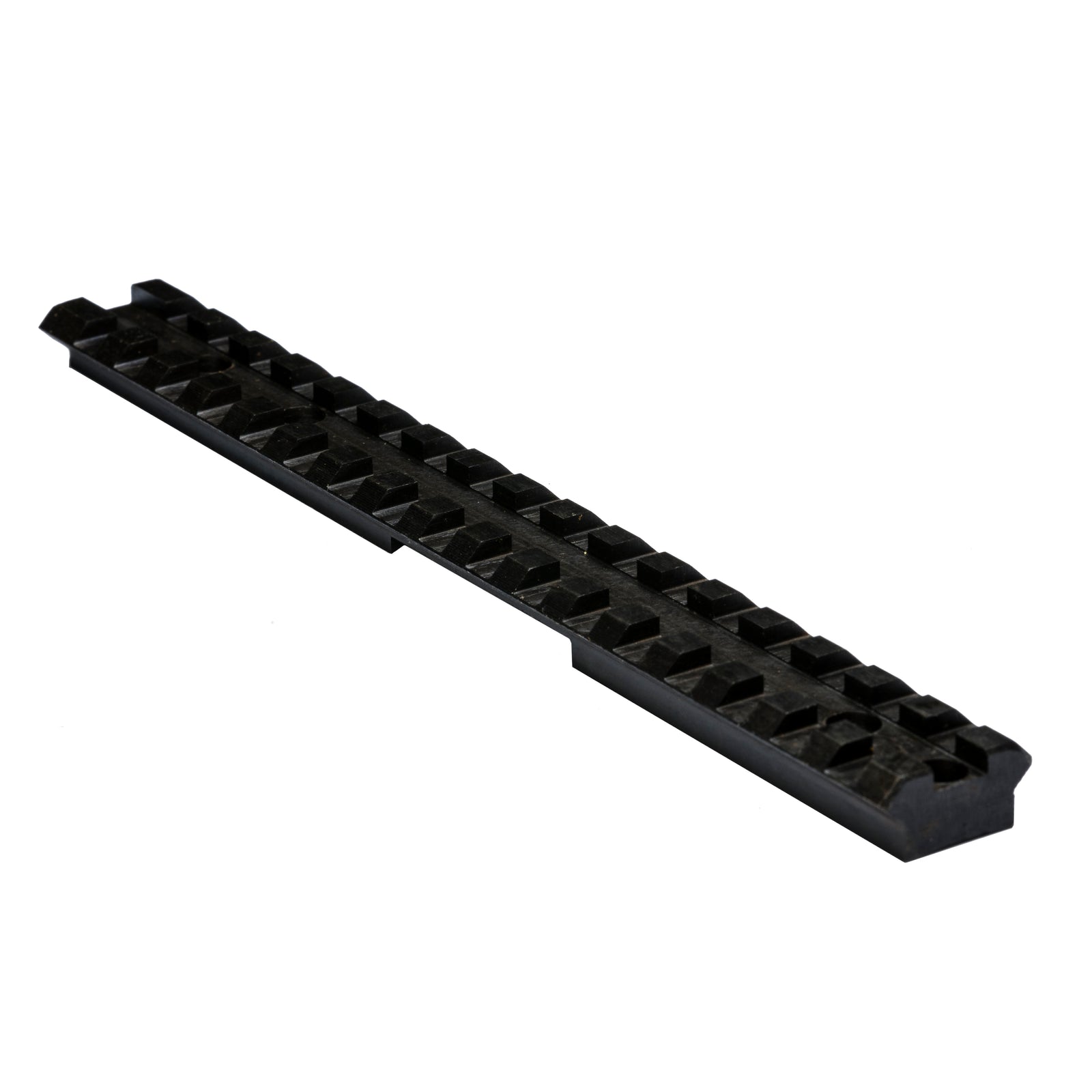This story starts with a question, as some stories do. Today’s question is simple: If you saw a photo of someone using a reflex sight in the year 1900, would you think they were a time traveler? Before looking into the history of red dots, I certainly would have.

The theory behind reflective sights, known by names such as reflex and red dot, is remarkably simple. Look at a piece of glass. Let that glass act a bit like a mirror, just like your car windshield does at the most inconvenient times. Let the thing it reflects help you aim. That’s all there is to it - a reflected aiming point of some sort that floats over the target, held aloft by a sort-of-mirror. It’s almost… too simple.
We start with Howard Grubb. Howard was born in 1844 in Dublin, to a family already steeped in telescopes. After leaving college without a degree, he went on to train as a civil engineer. In 1864, he joined his family’s optical firm to start a life of serious telescope work.
Under the name of the Grubb Telescope Company, Howard went on to build refractor telescopes for a number of observatories across Europe, powered by his family’s electrically driven clock drives.
In 1887, he was knighted.
At this point, I might say something like, ‘the sky’s the limit.’ Considering that Sir Howard Grubb already got his hands grubby building telescopes, it only seems fitting that something ground-level was his next endeavor.

In 1900, Howard premiered his latest invention - a reflective sight for small arms. Scopes were already in existence at this point, with magnifications as high as 20 power. Illuminated reticles existed to some degree, though they required a candle be installed in the scope. This inventor took a different approach - a non-magnifying optic that used the sunlight itself.
Howard went to work combining a few simple elements to deliver a rather impressive product. Imagine, if you will, a closed red dot. A little boxier than the one you’re picturing right now, actually. Throw a second small window up top, just above the objective end. Also, angle it a bit, to help the light enter directly from the sun.
Now mount yourself up behind the optic and take a look through.
Looking into the eyepiece, you’ll see whatever the reflex sight is pointed at. No added magnification, and a relatively small circular window. Meanwhile, the sunlight is streaming through the small window above the objective. This second objective window has a secret - a tiny reticle on the inner side of the glass. Sunlight streams past this reticle and down onto an angled, silvered glass. This silvered glass bounces the shadow of the reticle onto the inside of the objective glass. You are now seeing your target and a reticle, simultaneously.
The reflective sight has just been born. Nowadays, we’d know it as a closed reflex sight.
Reflex sights were by no means done with development, and Howard’s work was far from over. Less than two decades after its premier, the reflex sight was being introduced to the military as a piece of speciality equipment for fighter aircraft in World War I. Curiously, his patent was used by the German military in the form of the Oigee Reflector Sight, developed by the optical firm Optische Anstalt Oigee in Berlin.

These sights, in contrast to Howard’s diminutive small arms modification, used electronic illumination. Light was sent through a similar reticle-bearing lens, though this time from below. It was bounced upward, appearing on the surface of a 45 degree beam splitter. The gun operator could align this sight quite easily, without the need for proper orientation on older mechanical sights.
However revolutionary this design was, it was applied mostly on a trial basis.
Before too long - and not long before World War II - French forces began adopting the reflex sights for their bombers and fighters. In the 1930s, this technology became a little more widespread, and other airforces began adopting the same.
When war broke out again, these sights were equipped with even better capabilities. In 1939, the British combined the reflex sight with a gyroscope that accounted for the plane’s velocity and rate of turn. The sight’s reticle could now adjust for lead.
But we’re not here to talk about the gargantuan reflex sights that were mounted into airplanes. Instead, it’s time to turn to the ground again for a look at small arms.
The Nydar Shotgun Sight gained fame in 1945 for its use on… well, shotguns. This was a remarkably simple contraption, converting Howard’s closed design into a more modern open reflex configuration. Attached to a strip of metal a few inches long, the sight consisted of a front glass roughly an inch and a half in diameter. Back at the rear of the mounting apparatus, a small prism and reticle sat open to the sun. With sufficient ambient light, the reticle would be reflected up onto the forward glass. Unfortunately, this only worked with ambient light that was bright enough - good news in a desert, not so useful in the jungle.

1947 saw the creation of the Giese electric gunsight. The Giese sight had a battery-powered illuminated reticle. Unfortunately, my inability to speak German has stalled me on this front. I have no serious schematics or writing on this particular sight. Still, it appears that reflective sights mounted on handheld armaments finally appeared before 1950. Since then, the advent of tiny batteries and even tinier LEDs has pushed this field to where it is today.
Now that we’ve gone over the history, it’s time to talk definitions.
Early reflective sights were known by exactly that term. Only later did they come to be called reflex sights. While many claim that the word reflex is a shortened version of the word reflective, others claim that the term was a marketing ploy. How fun is it to say that you could bring your firearm to point at the right spot without worrying about sight alignment - almost, on reflex.
However it came to be, reflex sights were now permanently a part of the firearm world. Eventually, designers would drop the reticle in favor of the dot. The red dot sight would be born. Of course, nowadays we’re reintroducing reticles to red dots. It’s a little like history in reverse. It’s a little… like time travel.
I’d like to finish with a quote from the Illustrated London News in 1887.
“Sir Howard Grubb, born at Dublin in 1844, was the youngest son of the late Mr. Thomas Grubb, F.R.S., an eminent engineer, who invented for the Bank of Ireland some useful improvements of the apparatus for printing and numbering bank notes, among his other occupations; and who after commenced, at first rather as a ‘hobby,’ the making of optical instruments.”
---
We hope you’ve enjoyed this look into the world of firearms. If you’d like to view this in a different format, it’s available in other convenient locations. If you’d like to hear the podcast, you can find it at The Bullet:In. For the video version, take a peek on our YouTube.
To read up on other scope history, take a peek at some similar articles:





Zackery Opheim
May 08, 2024
Love the way this thing looks. Want one for my Auto-5. Is there any chance you’re putting something like this on the market?